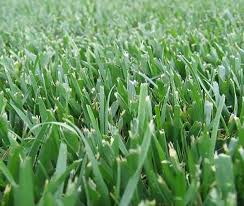Creating a durable, lush, and healthy lawn doesn’t have to be complicated—especially when you’re working with Kentucky 31 grass seed. Known for its resilience, cost-effectiveness, and adaptability, this variety of tall fescue has long been a favorite among homeowners, farmers, and landscapers across the United States.
Whether you’re planting a new lawn or overseeding an existing one, Kentucky 31 grass seed (often abbreviated as KY-31) provides a practical solution for achieving a vibrant, low-maintenance yard. In this complete guide, we’ll explore everything you need to know—from the seed’s characteristics and benefits to step-by-step planting instructions and maintenance tips.
Table of Contents
What is Kentucky 31 Grass Seed?
Kentucky 31 grass seed is a variety of tall fescue originally developed in the 1930s. It quickly gained popularity because of its robust nature and adaptability to various soil types and climates. Unlike many modern turfgrasses, KY-31 doesn’t require intensive care, making it a reliable choice for areas with heavy foot traffic, grazing, or minimal irrigation.
Key Features:
- Cool-season grass: Thrives in spring and fall
- Deep root system: Increases drought resistance
- Coarse texture: Not as fine as some turf varieties, but very sturdy
- Wide adaptability: Grows well in sun and partial shade
- Low-maintenance: Requires less fertilizer and watering compared to other grasses
Why Choose Kentucky 31 Grass Seed?
The growing popularity of kentucky 31 grass seed is no accident. Here’s why it’s such a highly regarded option:
1. Toughness and Durability
KY-31 is ideal for high-traffic areas like sports fields, playgrounds, and farms. Its strong root system can handle frequent use without becoming patchy or thin.
2. Drought Tolerance
Thanks to its deep roots, Kentucky 31 grass seed is more drought-tolerant than many other cool-season grasses. It stays greener longer during dry spells, making it great for regions with inconsistent rainfall.
3. Affordability
One of the most cost-effective grass seeds available, KY-31 delivers great results without breaking the bank.
4. Wide Growing Range
From the transitional zone to parts of the southern United States, this seed thrives in various soil and weather conditions.
How to Plant Kentucky 31 Grass Seed
Growing a beautiful lawn with Kentucky 31 grass seed starts with proper planning and preparation. Follow these step-by-step instructions for best results:
Step 1: Prepare the Soil
- Test the pH level of your soil (ideal range is 5.5 to 7.0).
- Remove weeds, rocks, and debris from the area.
- Loosen the top 2 to 3 inches of soil using a tiller or rake.
- Add compost or soil amendments if necessary to improve drainage and fertility.
Step 2: Seed at the Right Time
- The best times to plant Kentucky 31 grass seed are early fall and spring.
- Soil temperatures should be between 50°F and 65°F for optimal germination.
Step 3: Apply the Seed
- Spread 5 to 8 pounds of seed per 1,000 square feet for new lawns.
- For overseeding, use 3 to 5 pounds per 1,000 square feet.
- Use a broadcast spreader for even distribution.
Step 4: Cover and Water
- Lightly rake the area to ensure the seed has good soil contact.
- Mulch with a thin layer of straw to retain moisture.
- Water immediately after planting and keep the soil moist (but not soaked) until germination.
Caring for Your Kentucky 31 Lawn
Once your lawn is established, regular maintenance will keep it looking its best. Here are the essentials:
1. Watering
- Water deeply and infrequently—about 1 to 1.5 inches of water per week.
- Avoid shallow watering, which leads to weak roots.
2. Mowing
- Mow when the grass reaches 3.5 to 4 inches high.
- Cut no more than one-third of the grass blade at a time.
- Ideal mowing height: 2.5 to 3 inches.
3. Fertilizing
- Apply a balanced fertilizer (like 10-10-10) in early fall and spring.
- Avoid excessive nitrogen; it can lead to thatch and disease.
4. Weed Control
- Use pre-emergent herbicides in early spring to prevent weed germination.
- Hand-pull weeds or spot-treat with post-emergent herbicides as needed.
Common Challenges and Solutions
While Kentucky 31 grass seed is low-maintenance, a few common problems can arise. Here’s how to manage them:
Problem: Brown Patches in Summer
- Cause: Heat stress or lack of water.
- Solution: Increase deep watering and mow higher during hot months.
Problem: Thatch Build-Up
- Cause: Over-fertilization or poor mowing practices.
- Solution: Dethatch in the fall using a dethatcher or power rake.
Problem: Disease and Fungus
- Cause: Excess moisture or dense planting.
- Solution: Improve air circulation, avoid overwatering, and treat with fungicides if necessary.
Overseeding with Kentucky 31 Grass Seed
Overseeding is an excellent way to revitalize thin or patchy areas. Here’s how:
- Mow your existing lawn to a short height.
- Rake and dethatch to expose soil.
- Spread Kentucky 31 grass seed evenly over the area.
- Water lightly but frequently until new grass establishes.
This method is particularly effective in early fall when conditions are optimal for germination and growth.
Final Thoughts
If you’re looking for a practical, reliable, and affordable solution to achieving a green and robust lawn, Kentucky 31 grass seed is an excellent choice. Its adaptability, drought resistance, and ability to thrive in a range of conditions make it one of the most popular grass seeds in the United States.
Whether you’re starting from scratch or rejuvenating an existing lawn, following the steps outlined in this guide will help you grow a healthy and attractive lawn with Kentucky 31 grass seed. With a little patience and proper care, your yard can become the envy of the neighborhood—no matter the season.



